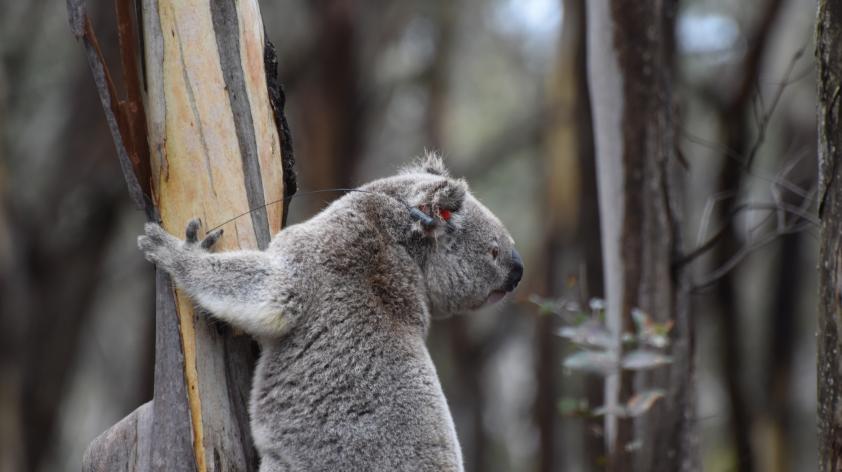
Advances in koala tracking
For many years I have easily been able to spot a radio tracked koala, how? By the telltale sign of a collar around its neck. But technology is changing and so is how we are tracking koalas in Australia.
Part of my research at the San Diego Zoo and San Diego Zoo Safari Park involves animal welfare. We behaviorally monitor animals to see how they are interacting with each other, get an idea of what their daily behaviors are, as well as see how they might be doing in a new exhibit or location.
What we don’t always think about is the animal welfare of animals in their native habitats, unless you are researching those animals.
Historically, koalas that are part of research studies have had a variety of radio, GPS, and proximity collars put on them for tracking purposes, but there can be issues with them. Between crafty koalas that take off the collars, to potential neck rub, there can be some welfare concerns about the use of collars on koalas.
There was never an alternative, until now.
To alleviate some of these issues, both Drs Kellie Leigh and Bill Ellis are starting to use advancements in technology that allow much smaller devices to track koalas.
In fact, it might be hard to see these advances on the actual koala. Advance in VHF technology has allowed a small tracker to be added to the required ear tags that koala researchers must place on any koala that is part of a research project. These small additions are barely noticeable to both us and the koalas. They even have longer battery life (a common issue with any electronic equipment deployed in the field) so they can stay deployed for long periods of time without worrying about the common issues with collars.
It is exciting to see the advancements in technology and how they help not only our researchers learn the ins and outs of koala behaviors, but also potentially the koalas themselves. The goal of monitoring animals in the wild is to not disturb them as much as possible and using “mini-trackers” is a good step in that direction.
Now I will need to start keeping my eye out for ear tags and antennas in order to know that I am looking at the koala we are tracking!













